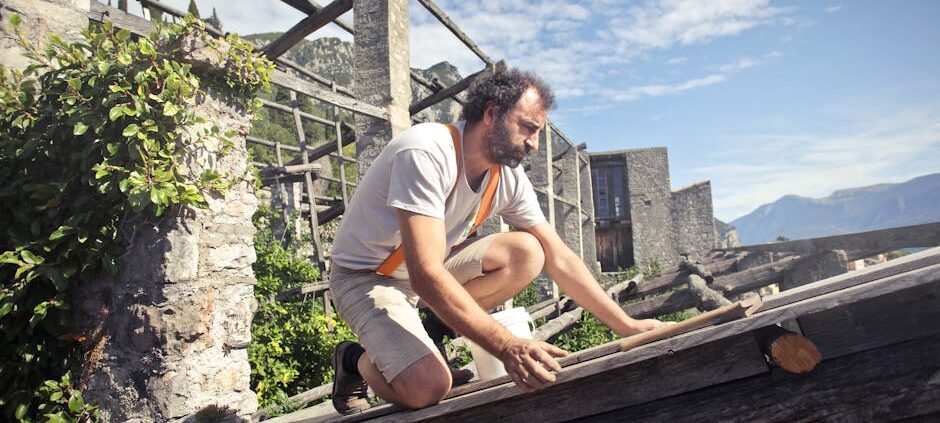How to Prepare for a Smooth Roof Installation Process
Introduction to Roof Installation: What You Need to Know
Getting a new roof is a big deal. It’s not just about slapping some shingles on top of your house. It involves careful planning, choosing the right materials, and finding skilled workers to get the job done. Before diving into the nitty-gritty of materials and costs, understand this: a smooth roof installation process starts with knowing what’s ahead. First off, you need to decide what type of roof suits your home and budget. Are we talking asphalt shingles, metal roofing, or something else? Each has its perks and price points. Then, there’s the task of picking a reliable contractor. Not all roofers are created equal. Look for someone with solid reviews, proper licensing, and insurance. Next up, prepare your home and family. Roof installation can be noisy and might disrupt your daily routine. Lastly, understand the timeline and budget. A new roof isn’t done in a day, and surprises in terms of costs can pop up. Being well-informed means fewer headaches down the road.
Choosing the Right Material for Your Roof Installation
Choosing the right material for your roof is critical. It’s not just about the looks; it’s about durability, cost, and protection against the elements. Here’s the deal – asphalt shingles are the go-to for many because they’re affordable and easy to install. They can last up to 20 years. Metal roofing, on the other hand, costs more upfront but pays off with up to 50 years of life and resistance to extreme weather. If you’re aiming for style, you might lean towards slate or clay tiles, which give a unique look but be ready to spend more. Remember, the local climate plays a big role in your decision. Heavy snow? Metal or slate might be your bet. Hot, sunny area? Tiles can handle it. Think about your budget, but also consider long-term durability and maintenance. A smart choice now saves headaches later.
Finding a Reliable Contractor for Your Roof Installation
Finding a good contractor is key to a headache-free roof installation. Start by asking friends and family for recommendations. People you trust will give you honest feedback about contractors they’ve used. Next, check online reviews but take them with a grain of salt. Look for patterns in the feedback rather than focusing on one-off comments. Make sure the contractor is licensed and insured; this protects you if something goes wrong. Ask for references and actually call them to get real insight into how the contractor works. Finally, get quotes from multiple contractors to compare prices, but remember, the cheapest option isn’t always the best. Choose someone with a good balance of experience, reputation, and cost.
Preparing Your Home for Roof Installation Day
Getting your home ready for roof installation day means you’re almost at the finish line. But before the team arrives, there are a few things you need to tackle to ensure everything runs smoothly. Let’s break it down into simple steps. First, move your cars out of the driveway. Roofers need easy access to their tools and materials, plus you’ll want to keep your vehicle safe from any falling debris. Next, consider your pets and kids. The noise and commotion can be stressful for them, so arranging a playdate away from home or a quiet room in the house might be a good idea. Don’t forget about your valuables. Vibrations from the installation work can travel through your home, possibly knocking down pictures or shaking shelves. Take a quick walk through your home, securing or removing anything fragile. Lastly, talk to your neighbors. Giving them a heads-up about the work can go a long way in maintaining good neighborly relations, especially if they need to adjust their own schedules or parking arrangements. With a bit of preparation, your roof installation day can be as hassle-free as possible, setting the stage for a job well done.
Understanding the Timeline: What to Expect During Roof Installation
Knowing how long it will take to install your new roof sets the right expectations and helps you plan accordingly. Typically, the installation can take anywhere from one to several days. This variance largely depends on the size of your roof, the type of materials being used, and weather conditions. For a standard home, a skilled team might finish the job in a day. But if your home is larger, or if the job involves complex materials or structures, it could stretch out to a week. Weather plays a big role, too. Rain, high winds, or other bad weather conditions can delay the process. So, when planning your roof installation, consider these factors. It’s not just about starting; it’s about timing it right and having a backup plan in case of delays.
Safety Measures and Precautions During Roof Installation
Safety is king when it’s about getting a new roof over your head. Roof installation can be risky business for both the workers and the homeowners. To ensure a smooth and safe process, follow these straightforward steps. First, clear the area around your house. This means moving cars, patio furniture, and any loose items that could get damaged or pose a hazard. It’s not just about protecting your stuff; it’s about giving the workers the space they need to operate safely. Next, cover anything in the attic. Dust and debris can fall through roof spaces during the work. Protect your possessions with old sheets or tarps. Then, think about your kids and pets. Loud noises and strangers can be stressful. Find a comfortable place for them to stay during the day. Remember, communication is key. Talk to your roofing contractor about their safety practices. They should follow proper safety protocols, including wearing safety gear and securing the work area. Lastly, stay clear of the work area during the installation. Even with the best precautions, roofing work can be unpredictable. Keeping a safe distance ensures you’re not in harm’s way. Taking these steps seriously will help keep everyone safe and ensure the roof installation goes smoothly.
Post-Installation: Inspecting Your New Roof
Once the roofers pack up and say they’re done, your job isn’t over yet. Here’s what you need to do: don’t just take their word for it. You need to make sure they did everything right. Grab a ladder, or if heights aren’t your thing, ask someone who doesn’t mind climbing up there to take a good look at your new roof. You’re checking for a few things: make sure there are no loose shingles, the flashing around chimneys or vents is tight and properly sealed, and gutters are clean and attached firmly. If anything looks off or you spot a problem, call your roofing company back as soon as possible. Most reputable companies will fix issues right away, especially if it’s something they missed. Remember, catching problems early can save you a big headache and money down the road. It’s better to be safe than sorry, so take the time to check.
How to Maintain Your Roof After Installation
Once your new roof is installed, it’s crucial to keep it in top shape for years. Here’s how:
- Inspect your roof regularly. At least twice a year, in the spring and fall, give your roof a good look-over. Check for missing, loose, or damaged shingles and deal with issues promptly.
- Keep it clean. Leaves, branches, and other debris can pile up and cause water to pool on your roof. This can lead to leaks and damage. Clean your gutters and the roof itself to avoid these problems.
- Trim overhanging branches. Trees can be your roof’s worst enemy. Overhanging branches can scrape against shingles during windy days, and falling branches can cause serious damage. Keep trees trimmed back from your roof.
- Prevent ice dams. In colder climates, ice dams can form at the edge of your roof and prevent melting snow from draining off. This can lead to water seeping under the shingles and into your home. Proper insulation and ventilation of your attic can prevent ice dams.
- Deal with repairs quickly. If you notice damage or a leak, don’t wait. Small problems can quickly become big, expensive ones if they’re not dealt with promptly.
Taking care of your roof means it will better protect your home, possibly extending beyond its expected lifespan. It’s about being proactive rather than reactive. Make roof maintenance a regular part of your home care routine to ensure your roof stays strong and functional for as long as possible.
Common Mistakes to Avoid in the Roof Installation Process
When getting a new roof, skipping steps or cutting corners can lead to headaches and extra costs. Here are common mistakes you definitely want to avoid. First, many folks pick the cheapest bid. Sure, saving money feels great, but quality matters. A low price often means compromises in materials or workmanship. Next, people often overlook ventilation. Good airflow is crucial for your roof’s longevity. Ignoring it can cause moisture buildup and damage. Some ignore the importance of a written contract. Always get details like materials, costs, and timelines in writing. It protects both you and the contractor. Another slip-up is not checking the contractor’s insurance and licenses. This could leave you liable for accidents on your property. Last, don’t assume all materials are the same. Choose materials that suit your climate and house style. Avoiding these missteps can make your roof installation smoother and more durable.
Conclusion: Ensuring a Smooth Roof Installation Experience
A smooth roof installation is all about preparation and choosing the right team. Remember, a good roof protects your home and gives you peace of mind. So, make sure you discuss everything with your contractor beforehand. Be clear about your expectations, the timeline, the budget, and any concerns you might have. Keep communication open during the project to avoid surprises. Don’t forget, quality matters more than speed. A rushed job can lead to mistakes that cost more in the long run. Last but not least, ensure your contractor cleans up after the project. You want your new roof to look great and your property to remain tidy. By keeping these points in mind, you’re setting yourself up for a successful roof installation.








